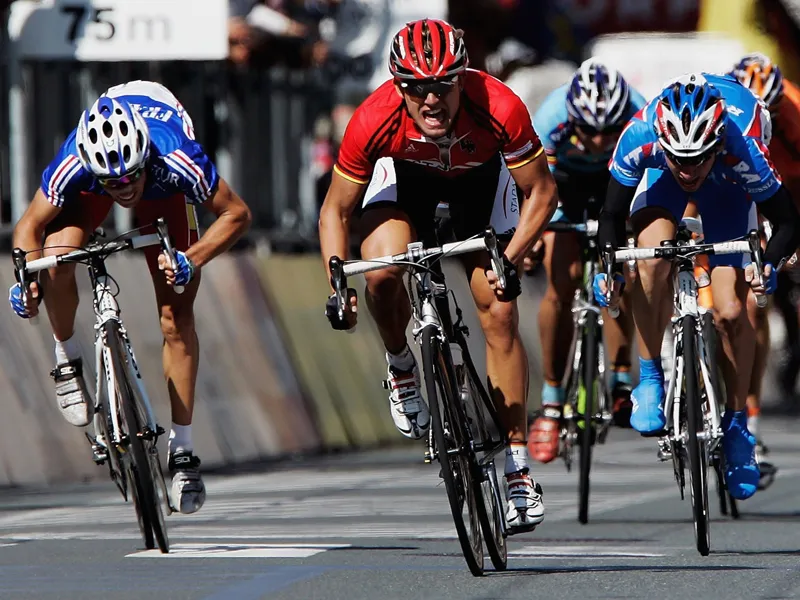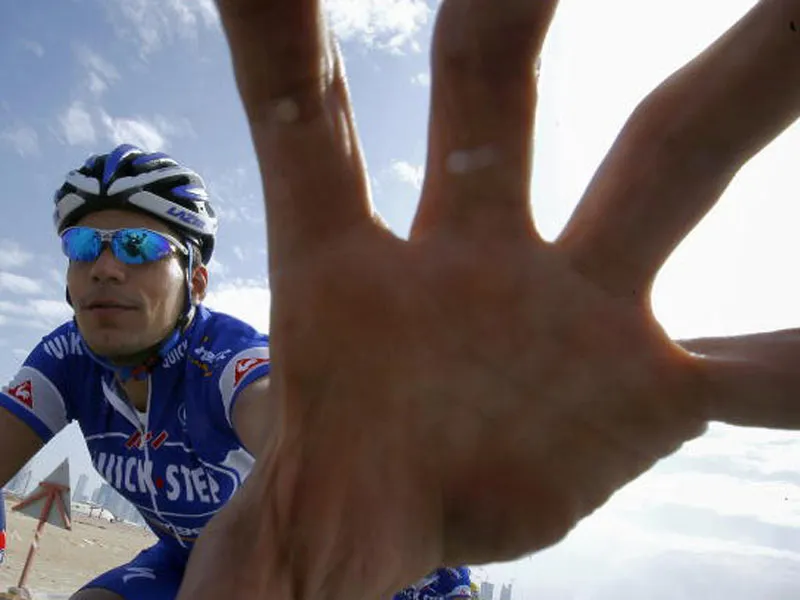Fitness will eventually plateau if you just ride steady all the time. That is not to say that you cannot get a good level of fitness by staying below 80 percent of your maximum heart rate (HRmax), but you lack what coaches sometimes refer to as 'top end'.
When you do go harder, that 'anaerobic' feeling hits your legs and you can feel ill prepared. Steep hills, changes of speed and racing all feel that much harder than they might if you had prepared the turbocharger that lays dormant inside.
This does not mean that the rule of staying mostly below 80 percent of your HRmax should be dropped. You still need adequate warm-up for the harder sessions, recovery rides and parts of the week when you cruise rather than push. Those who ignore this rule will be suffering 'anaerobic overload', so a rethink of training might be due before adding additional high intensity sessions to a poorly planned riding regimine.
Doing more steady riding is advised for the following types of rider:
1. Those doing interval efforts or a group chain-gang more than twice a week.
2. Riding more than 25 percent of rides hard (>80 percent of HRmax) and often never riding below 70 percent at all.
3. Rushing the warm up rather than taking at least 10 minutes to hit 80 percent HRmax.
Research has shown that replacing some normal steady miles with high intensity sessions over a 6-8 week period gives great improvements in fitness and speed.
With just two sessions a week with high intensity workouts you can get fitter. But, don't rush into this right now unless you've been riding more than 4-5 hours a week. If you haven't, your challenge is to get out more and keep it steady - then in a month's time you can add one hard session a week.
Intervals can gave you more power (about 10 to 50 watts extra) and they also raise your tolerance to the chemical warfare that goes on when you start to hammer it. Firstly, less lactate and debilitating chemicals (such as ammonia) are produced at a given power.
Second, lower carbohydrate use results at any power output so you can go longer, harder if required. Thirdly, as power goes up the rate of carbohydrate you use per minute also goes up as well. So energy drinks during harder riding and high carb meals become even more important to fuel those hard working cycling muscles.
Effort re-think
Intervals work, for all levels of rider as long as enough base training is done first. However, a vital ingredient is required when you ride harder, especially if you are just used to riding how you feel. That ingredient is active recovery - namely following harder rides with easy ones.
Too many hard rides in a row and you'll feel wrecked, ride slow and risk injury and or burning out.
You need to have a light-riding day before an interval session or group burn-up to get the most from your efforts. Go into it too tired and you'll drag yourself through, but not do the quality work that you should. This is the classic amateur mistake: riding too hard on easy days and too easy on hard days.
The other point made by research is that active riding between efforts needs to be right. It's not smart to cut a rest to 30 seconds when most research would suggest at least one minute and ideally two minutes between efforts. Similarly don't extend the rest from say 90 seconds to five minutes - you'll lose the physical and mental focus that intervals require. If you can, organise a group of similar ability riders to have a chain gang with efforts at the front then recover by dropping to the back.
Fitness rider Steve Masters is a good example of a someone who has built good fitness before attempting any interval work. Five months of base work preceded any efforts and the steady state still predominates but now at a faster pace. This means he can move up to occasional efforts without fear of 'lacking fitness'. You may get faster with efforts but you have to have the base in place beforehand. Once you have fitness you can decide to do the harder stuff.
Some excellent examples include, with 20 minutes progressive warm up:
SESSION ONE: 5 x 5 minutes at 87 percent above conversational pace or until the legs just start feeling uncomfortable; take a one- to two-minute period. between efforts to sip and drink, sip and get ready for the next effort
SESSION TWO: mini efforts of 10 seconds, roughly the same effort as you could sustain for around 30-minute all-out ride; take a strict 20-second ease off the pedals and repeat a total of eight to 12 times.
SESSION THREE: 30 second all-out effort alternating seated and out of the saddle; you will be exhausted at the end of the efforts then cruise very easy for four-and-a-half minutes - if you can stack between six and a dozen you can then go home, proud of your top-end torture.
Are you ready?
You must have a mature aerobic system for intervals to be relevant and there is no shortcut to building that base, onto which you can add intervals later. So you'll need to plan when to start the hard training, giving yourself roughly a peak fitness window of six to eight weeks. You'll know when you are ready for hard interval training when...
You 'mature' - on climbs you can stay below your 80 percent HRmax aerobic limit. Some rides can be ridden at very low heart rates yet still respectable speed (e.g. 17mph average at HR101 beats per minute).
You can see at least three-months of progression and a levelling off in your aerobic tests. You can use indoor power to HR 'RAMP' tests, 15- to 20-mile looped ride at a prescribed average HR, or similar bench mark.
You have had consistent training with very little time off due to over-use injuries, fatigue or lack of motivation. Weekly hours may need to be at least five to six, and may be optimal anywhere from eight to 16 hours.
It's not always easy to do this type of hard riding but the rewards are worth it, making every climb, jump or change of pace that much easier. Enjoy the top-end work.



